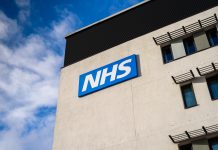The NHS is improving patients’ contact with their GPs by granting £240 million in funding, to better GP technology and train ‘care navigators’
Ending the 8am rush, the NHS is to receive funding from the UK government to improve care practices and GP technology.
In the NHS, an average-sized practice of 10,000 patients often receives more than 100 calls in the first hour of every Monday. Because of this huge amount of patients, and outdated technology, many patients do not receive any care and are made to call back the next day.
Now, adopting the latest GP technology, patients will be able to contact their general practice more easily and quickly – and find out exactly how their request will be handled on the day they call.
Helping patients to contact their GP surgery is set to improve satisfaction with the NHS, and deliver on the government’s strategy to cut waiting lists.
Working towards the government’s strategy to cut waiting lists
How does this new GP technology work for patients?
This technology is set to replace old analogue phones with modern systems, so patients never get engaged tones, and easy-to-use online tools to ensure patients get the care they need as soon as possible.
With advanced digital telephony, rather than an engaged tone, patients will receive a queue position, a call-back option and their call can be directly routed to the right professional.
The phone system will also be integrated with the clinical systems so practice staff can quickly identify patients and their information from phone numbers.
Essentially, now, when patients contact their practice online or over the phone, they will know on the day they make contact how their query will be managed via GP technology rather than being told to call back later.
If their need is urgent, they will be assessed and given appointments on the same day. If it is not urgent, appointments should be offered within two weeks, or patients will be referred to NHS 111 or a local pharmacy.
Receptionists to become expert “care navigators”
Another part of the £240 million will fund includes 6,500 care training places, where the new, expanded role of receptionists is to become expert “care navigators”.
The job of a care navigator is to gather information, make sure patients are directed to the most suitable healthcare professional and simplify and streamline the process. Care navigators will direct patients to other professionals within the general practice or other medical professionals such as community pharmacists who can best meet the needs of the patients.
According to government estimates, successful care navigation can help direct 40% of requests more effectively and speeds up appointments for those who need them.
Successful care navigation can help direct 40% of requests more effectively
The government will provide primary care networks and GP practices with the funding and support required to make the changes including through integrated care boards.
Across NHS trusts, the one member of staff per practice who is trained can then pass on the training to colleagues.
10% more GP appointments are happening every month
Health and Social Care Secretary Steve Barclay said: “We are already making real progress with 10% more GP appointments happening every month compared to before the pandemic.
“I want to make sure people receive the right support when they contact their general practice and bring an end to the 8am scramble for appointments.
“To do this we are improving technology and reducing bureaucracy, increasing staffing and changing the way primary care services are provided, which are all helping to deliver on the government’s promise to cut waiting lists.”











